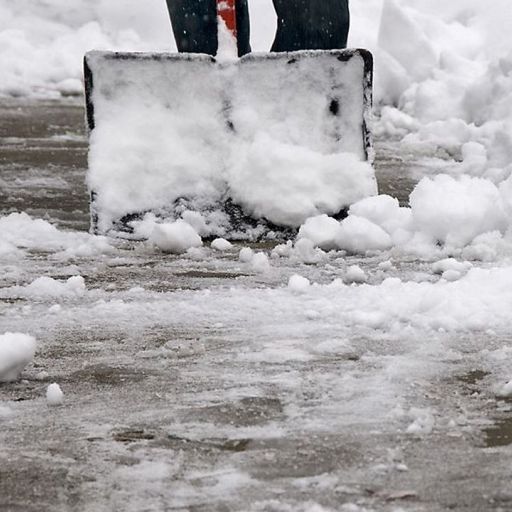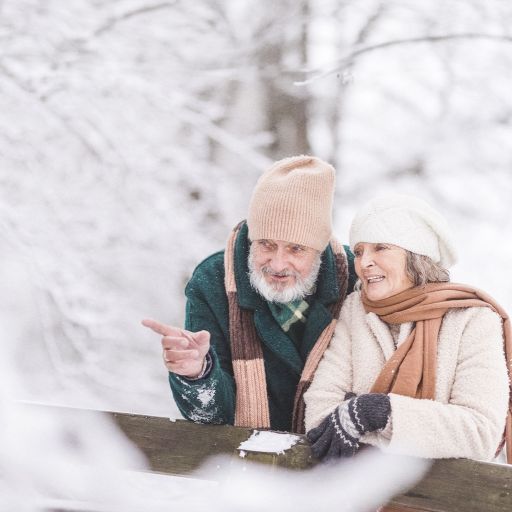As winter approaches, the temperature drops sharply and snowflakes fly. It not only brings beautiful snow scenery, but also brings challenges to people, especially for the elderly.
The elderly's body is relatively less adaptable to cold weather, and cold weather and icy roads can create dangerous situations that threaten the safety and health of the elderly.
Therefore, it is particularly important to ensure the safety of the elderly in winter, especially in terms of cold protection and anti-slip. This article will explore in detail how the elderly can prevent cold and anti-slip in winter, and recommend suitable exercises for them to improve safety and health.
Understand the risks faced by the elderly in winter
The elderly often face some physical vulnerabilities that can be particularly challenging in winter. As they age, the elderly may experience decreased muscle mass, decreased bone density, and decreased overall strength and balance. These factors increase the risk of falling injuries, especially on icy or uneven roads.
In the elderly population, their body's ability to regulate temperature weakens with age. The elderly may have a decreased ability to sense cold, which increases their risk of hypothermia and frostbite.
Many older people experience colds more often than younger people during the winter, and conditions such as diabetes, arthritis, and cardiovascular disease can exacerbate the effects of cold weather, so extra precautions must be taken.
Winter can exacerbate feelings of loneliness and depression in older people, especially if they are unable to move due to ice. Staying active and socializing is essential for mental health, which highlights the importance of finding safe ways to participate in activities during the winter.
One of the simplest and most effective ways to protect against the cold is to dress appropriately. Here are some tips:
Choose layers for winter clothing to better regulate body temperature. The outer layer should be windproof and waterproof, while the inner layer can be warm materials such as wool, down jackets, or synthetic fibers.
Pay special attention to protecting your head, hands, and feet, wearing essential accessories such as warm hats, scarves, gloves, and thick shoes and socks. A lot of body heat is lost through the head, so wearing a warm hat can have a great head warming effect.

Footwear: Non-slip, waterproof boots with good traction are essential for slip resistance and warmth. Choose footwear designed for winter, with rubber soles for better traction.
And when traveling in the winter, it is recommended to use a cane or walker to increase walking stability and reduce the risk of slips.
It is also important to keep the indoor environment warm and comfortable. Here are some tips:
Heating: Make sure the heating system is operating properly before the cold weather sets in. Consider using floor heating in areas where seniors spend the most time, but always follow safety guidelines to prevent fire hazards.
Insulation: Check doors and windows for drafts and insulate as needed. Thick curtains can also help keep warm in colder months.
Hydration and nutrition: Encourage regular hydration, as seniors often forget to drink water in the winter. Provide warm, nutritious meals to help maintain body temperature and overall health.
Regular health checkups in the winter are also crucial to the health of seniors. Because cold weather can aggravate certain diseases. It is crucial to take medications on time and communicate any changes in health status to healthcare providers.

Anti-slip strategies
Creating a safer living environment can help reduce the risk of falls:
Clear sidewalks: Regularly clear snow and ice from sidewalks and driveways. Use salt or sand to improve traction and prevent slippery surfaces.
Install handrails: Make sure handrails are installed on stairs and exterior entrances. These handrails provide support and stability for seniors as they walk in areas that may be dangerous.
Lighting: Make sure there is adequate lighting both indoors and outdoors. Motion sensor lights are especially useful for illuminating pathways during the darker winter months.
Consider the following tips when walking outside:
Footwear: Wear shoes with good traction, as mentioned above. Special non-slip shoe covers can also be worn over regular shoes for added traction.
Walkers: Encourage the use of canes or walkers with rubber tips to provide additional stability. Make sure these walkers are in good condition and suitable for winter conditions.
Take small steps: Remind seniors to take small steps and use caution when walking on ice. Keeping feet closer to the ground can improve balance and reduce the risk of falls.
Teach seniors to be aware of their surroundings and avoid dangerous situations:
Weather conditions: Monitor weather forecasts and avoid going out in extreme weather conditions, such as heavy snow or ice storms.
Be cautious: When outside, remind them to be aware of hazards such as uneven surfaces, puddles, or icy areas.

Winter activities need to be done safely
Indoor activities
While outdoor activities are often limited by cold weather, there are many indoor activities that can keep seniors active and engaged:
Senior Yoga and Aerobics: These two exercise practices help with balance, flexibility, and relaxation. When winter comes, we can watch videos indoors to learn and exercise.
Yoga helps to enhance the flexibility of seniors, and aerobics can help to exercise muscles throughout the body, so yoga and aerobics are a low-intensity exercise suitable for seniors to do indoors.
Arts and crafts: Participating in creative activities can help improve fine motor skills and provide mental stimulation. Painting, knitting, or pottery are enjoyable winter pastimes.
Outdoor activities
For those who like outdoor activities, the following are some winter activities that can be adjusted to ensure safety:
Gentle walking: On days with moderate temperatures, seniors can choose to walk slowly to keep their bodies moving and strengthen their cardiopulmonary function. When choosing a walking route, be careful to avoid slippery roads.
We should choose places without snow and ice, such as parks or sidewalks, so that we can enjoy the beauty of winter while exercising.
Snowshoeing: This low-impact activity is very beneficial to cardiovascular health and can be done on flat, well-maintained trails. Make sure participants wear appropriate shoes and bring walking sticks for added stability.
Winter photography: The cold winter is not only a season to hide by the fireplace, but also a beautiful time when nature changes into silver clothes.
For the elderly, picking up the camera, going out of the house, and capturing this crystal clear winter world with the lens can not only appreciate the unique natural beauty, but also find joy in creation.
Whether it is snow-covered trees, frozen lakes, or rime gilded by the sun, they can all become works of art under your lens. In this process, you not only exercise your body, but also cultivate your sentiments and make your life more colorful.

Encourage social connections
Isolation can be a major problem for the elderly, especially in the winter when mobility is reduced. Participating in social activities can help fight loneliness and improve mental health. Many communities offer winter programs specifically for the elderly. These may include:
Community reading clubs are a good communication platform for the elderly to share their favorite books and exchange reading experiences, or encourage community dinners where the elderly can share food, stories and friendships.
Teaching the elderly to use social media can open up new ways to connect with friends and family.
Winter can be extremely challenging for seniors, but with proper planning and precautions, it can still be a season of fun and activity. Emphasizing safety through effective cold and slip prevention strategies is critical.
By promoting appropriate winter clothing, home modifications, and safe mobility habits, we can help seniors navigate the winter season with confidence.
Additionally, engaging in winter-appropriate activities, both indoors and outdoors, can maintain physical health and improve mental health. Community and social connection play a vital role in ensuring seniors feel supported and less lonely.
As caregivers, family members, and community members, it is our responsibility to prioritize the safety and well-being of our aging loved ones during the winter.
By implementing these strategies, we can ensure they enjoy a safe, warm, and active winter, allowing them to embrace all the beauty this time of year has to offer.





